NEW: Cedar Nut Oil in The Treatment of Gastritis
Everyone knows that cedar nut oil is one of the most wholesome natural plant products. However, by no means everyone knows that it may be used as an effective medication in the comprehensive treatment of many illnesses and, in particular, in the treatment of such a widespread "disease of modern civilization" such as gastritis.

Gastritis of various degrees of severity, according to statistics, today afflicts almost every second inhabitant of the Earth - beginning with school children and ending in old age. There is no doubt that the principal causes of stomach disorders, as well as the generally deplorable health of modern people, involve a disruption of the environmental balance, the non-observance of the rules of proper nutrition, and a disregard for a healthy lifestyle.
And if this is the case, then the most obvious and reliable means to restore one's health - in those situations where it has not been irretrievably lost - are natural medicines that do not have any contraindications and that restore the natural functions of our body. One of the most powerful natural medicines is precisely cedar nut oil.
Everyone knows that it is beneficial, but what is the secret of its benefits? Just what properties impart to this coniferous elixir its curative power? What are the reasons that it can and must be used by even seriously weakened patients, even in the acute phases of such dangerous illnesses such as gastritis?
It is all quite simple. The unique composition of cedar nut oil exceeds any other oil in the quantity of its "ingredients," including, as it does, a large quantity of vitamins and trace elements that are essential for life. It is used, of course, not only for the treatment of gastrointestinal disorders. But precisely in this case it is irreplaceable for the simple reason that it permits the human body simultaneously to obtain an entire unimaginably wide assortment of beneficial substances while not irritating the walls of the stomach.
Moreover, the oily substance has a beneficial effect on this surface, which is sensitive to the smallest influence of chemical substances, thus creating a protective film - not only covering the surface, but also relieving pain and healing the smallest lesions. It is understandable, then, why the stomachs of those suffering from gastritis so gratefully welcome a dose of cedar nut oil when empty.
Of course, the point is not only its consistence, but also, as has been already mentioned, its widest spectrum of natural beneficial substances. By the way, the greatest quantity of these substances is preserved if the cedar nut oil is obtained by the cold-pressed method. For example, unsaturated fatty acids, which eliminate toxins and heavy metal salts from the body, are found in cedar nut oil in quantities three times greater than the widely known fish oil. Vitamin E, which is still called the "vitamin of youth," is contained in cedar nut oil in amounts five times more than in high-quality olive oil. Cedar nut oil is also rich in B group vitamins, which facilitate the restoration of the nervous system and vessels, normalize blood pressure, and lower cholesterol.
This unique product from the wilds of Siberia gives our body practically all vitally important amino acids and, thanks to the fact that it is rich in proteins, it is able to replace even animal fats in the diet. In this case, cedar nut oil is much more easily and quickly assimilated, and has no contraindications other than exceptional cases of individual intolerance.
Here are only some of the macroelements and trace elements vitally essential for all of us that are contained in cedar nut oil: copper, magnesium, manganese, silicon, vanadium, potassium, phosphorus, calcium, molybdenum, nickel, iodine, tin, boron, zinc, iron, barium, titanium, silver, aluminum, cobalt, sodium, and others.
The analgesic, anti-inflammatory, and healing therapeutic effect of cedar nut oil has been clinically proven on numerous occasions by conventional medicine. Analyses have demonstrated a lowering of the acidity of the gastric juice, an increase in the quantity of bile discharged, as well as an increase in the cholatocholesterol coefficient.
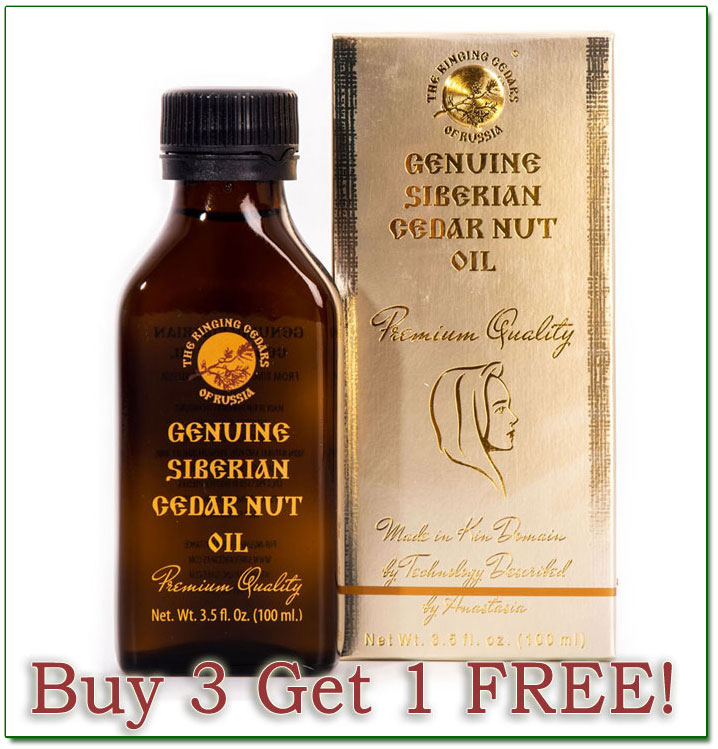
The high effectiveness of using the oil has also been shown precisely in the acute phase of gastritis and other disorders of the digestive organs. In addition, at the present this type of therapy is recommended by conventional medicine for patients with post-resection complications, especially with post-resection gastritis, esophagitis, and anastomosis. According to doctors, this method of treatment is much more effective than the previously widely used methods of medication replacement therapy.
The course of treatment is usually 21–30 days. During this period, in the overwhelming majority of cases, with the regular use of cedar nut oil - one to two teaspoons 30 minutes prior to eating in the morning, and one teaspoon two hours after eating in the evening - it is possible to attain the complete disappearance of gastritis symptoms. A repeat course of treatment, if necessary, is recommended after 10 days. The benefit of cedar nut oil is undeniable. But, of course, with regard to the duration and intensity of the therapy, especially in the presence of chronic illnesses and any tendency to allergic reactions, it is desirable to consult with one's attending physician.
N. Filimonova Ph. D.
Novosibirsk State Medical University
Novosibirsk, Russia
Copyright: RingingCedarsofRussia.org
* * *
Customer Reviews:
I WAS HAVING REAL BAD PAINS TO THE POINT I WOULD AVOID EATING IF I COULD. LOOKED UP MY SYMPTOMS AND IT APPEARED I MIGHT HAVE ULCERS. I READ ABOUT THE CEDAR NUT OIL AND THOUGHT WHY NOT TRY IT. AND YES IT WAS AMAZING THE PAIN SUBSIDED AND I STOPPED BURPING .IT IS AMAZING I RECOMEND IT HIGHLY.
Barbara, USA
* * *
I know the cedar nut oil has done wonders for my gastritis. Love it.
Sherry Walston, USA
* * *
After using the domain made cedar nut oil I saw a positive improvement in gastrointestinal function! It was almost immediate and it not only helped me heal but it felt very nourishing. Will purchase again!
Ann, USA
Buy combo "Buy 3 get 1 FREE" for cedar nut oil $107.40:

THE CEDAR NUTS - A TREASURE-HOUSE OF USEFUL SUBSTANCES
The nutritional and medicinal properties of nuts come largely from their content of fat, protein and other substances. Cedar nut fat differs from other fat sources in its high content of polyunsaturate fatty acids, especially linolic acid.

First among nitrogenous substances are the proteins, which in turn are characterised by an elevated content of amino acids, especially arginine. These amino acids are extremely important to development of the growing organism. Hence cedar nuts have been essential in the diet of children, teenagers and pregnant women. Nut protein is easy to digest.
Cedar nuts contain valuable lipolytic vitamins E and P . E-group vitamins, or tocopherols, are very important and essential in ensuring complete genetic heredity. (The word tocopherol in Greek literally means "I bear offspring".) A deficiency of Vitamin E upsets the fatty balance in the system. Vitamin E is responsible for the production of milk in nursing mothers, and its deficiency can stop lactation. A person's predisposition to atherosclerosis can also be explained by a Vitamin-E deficiency.
Cedar nuts contain a complex of B vitamins, which normalise the activity of the nervous system, have a favourable influence on the growth and development of the human organism, and improve blood composition. Young wolves delight in feasting on cedar nuts during exfoliation. Cedar nuts are used by both carnivores and herbivores, and are an effective antidote to vitamin deficiency, which causes serious disorders in the system.
Cedar nut nuclei are rich in valuable mineral substances and micronutrients. The food value is confirmed by the chemical composition of the cedar nuts. They surpass all other nuts as well as oil seeds in terms of phosphatidic content. As the richest source of lecithin they are comparable only to soybean. Cedar nuts are also a rich source of iodine, which is very important to residents of northern latitudes.
Cedar nuts offer a suffieint daily intake to satisfy an adult organism's daily need for amino acids, as well as such important and often deficient micronutrients as copper, cobalt, manganese and zinc. On the whole cedar nuts are very easy to digest, and have a tremendous beneficial effect on the human organism.
The shell of the cedar nut in pulverised form can be used as animal feed. It has an average food value in comparison with other types of feed. Granted, it does contain a good deal of fibre, making it more challenging to digest.
The process of extracting oil from the cedar nut by the cold-press method leaves a cedar oil powder which is rich in biologically active substances, micronutrients, proteins, Vitamins E, A, C, U of Group B, unsaturated fatty acids with no cholestorol content. This is an excellent dietary product, which facilitates the normalisation of substance metabolism, maintenance of health and preservation of human work capacity for many years. It can be added to desserts, creams, fruit and vegetable salads. It gives cakes, pies, ice cream and other confectionary products a delicate taste and aroma. It can be used as well with cottage cheese, honey, muesli, cereals etc.
COMPOSITION OF CEDAR NUTS
Nutrient Analysis Source: Custom
1 Yield: (28.000 gram(s))
No. Ingredients: 1
Category: Basic Food
Manufacturer: (None)
Nutrient Goal Template: DAILY VALUES/RDI - ADULT/CHILD
Percentage of Kcals
Protein 10.0%
Carbohydrate 6.2%
Fat, total 83.8%
Alcohol 0.0%
Table prepared by First DataBank Nutritionist Pro TM
Nutrient |
Value |
Unit |
Goal |
% |
Weight |
28.000 |
g |
|
|
Kilocalories |
186.760 |
kcal |
2000.000 |
9 % |
Protein |
1.904 |
g |
50.000 |
4 % |
Carbohydrate |
1.176 |
g |
300.000 |
0 % |
Fat, Total |
7.056 |
g |
65.000 |
11 % |
Alcohol |
0.000 |
g |
|
|
Cholesterol |
0.000 |
mg |
300.000 |
0 % |
Saturated Fat |
2.626 |
g |
20.000 |
13 % |
Monounsaturated Fat |
6.424 |
g |
|
|
Polyunsaturated Fat |
7.187 |
g |
|
|
MFA 18:1, Oleic |
6.028 |
g |
|
|
PFA 18:2, Linoleic |
6.967 |
g |
|
|
PFA 18:3, Linolenic |
0.220 |
g |
|
|
PFA 20:5, EPA |
|
|
|
|
PFA 22:6, DHA |
|
|
|
|
Trans Fatty Acid |
|
|
|
|
Sodium |
20.160 |
mg |
2400.000 |
1 % |
Potassium |
175.840 |
mg |
3500.000 |
5 % |
Vitamin A (RE) |
0.840 |
RE |
|
|
Vitamin A (IU) |
8.120 |
IU |
5000.000 |
0 % |
Vitamin A (RAE) |
0.280 |
mcg |
|
|
Beta-Carotene |
|
|
|
|
Alpha-Carotene |
|
|
|
|
Lutein (+ Zeaxanthin) |
|
|
|
|
Beta-Cryptoxanthin |
|
|
|
|
Lycopene |
|
|
|
|
Vitamin C |
0.560 |
mg |
60.000 |
1 % |
Calcium |
2.240 |
mg |
1000.000 |
0 % |
Iron |
0.857 |
mg |
18.000 |
5 % |
Vitamin D (ug) |
0.000 |
mcg |
10.000 |
0 % |
Vitamin D (IU) |
0.000 |
IU |
400.000 |
0 % |
Vitamin E (mg) |
|
|
20.000 |
|
Vitamin E (IU) |
|
|
30.000 |
|
Alpha-Tocopherol |
|
|
|
|
Thiamin |
0.348 |
mg |
1.500 |
23 % |
Riboflavin |
0.062 |
mg |
1.700 |
4 % |
Niacin |
1.224 |
mg |
20.000 |
6 % |
Pyridoxine (Vitamin B6) |
0.031 |
mg |
2.000 |
2 % |
Folate (Total) |
16.240 |
mcg |
400.000 |
4 % |
Folate (DFE) |
16.240 |
mcg |
|
|
Cobalamin (Vitamin B12) |
0.000 |
mcg |
6.000 |
0 % |
Biotin |
300.000 |
|
|
|
Pantothenic Acid |
0.059 |
mg |
10.000 |
1 % |
Vitamin K |
|
|
80.000 |
|
Phosphorus |
9.800 |
mg |
1000.000 |
1 % |
Iodine |
|
|
150.000 |
|
Magnesium |
65.520 |
mg |
400.000 |
16 % |
Zinc |
1.198 |
mg |
15.000 |
8 % |
Copper |
0.290 |
mg |
2.000 |
14 % |
Manganese |
1.213 |
mg |
2.000 |
61 % |
Selenium |
|
|
70.000 |
|
Fluoride Chromium |
|
|
0.120 |
|
Molybdenum |
|
|
75.000 |
|
Dietary Fiber, Total |
2.996 |
g |
25.000 |
12 % |
Soluble Fiber |
|
|
|
|
Insoluble Fiber |
|
|
|
|
Crude Fiber |
|
|
|
|
Sugar, Total |
|
|
|
|
Glucose |
|
|
|
|
Galactose |
0.000 |
g |
|
|
Fructose |
|
|
|
|
Sucrose |
|
|
|
|
Lactose |
0.000 |
g |
|
|
Maltose |
|
|
|
|
Sugar Alcohol |
|
|
|
|
Other Carbohydrate |
|
|
|
|
Tryptophan |
40.880 |
mg |
|
|
Threonine |
102.760 |
mg |
|
|
Isoleucine |
126.000 |
mg |
|
|
Leucine |
233.520 |
mg |
|
|
Lysine |
121.520 |
mg |
|
|
Methionine |
57.960 |
mg |
|
|
Cystine |
58.800 |
mg |
|
|
Phenylalanine |
124.040 |
mg |
|
|
Tyrosine |
118.720 |
mg |
|
|
Valine |
167.440 |
mg |
|
|
Arginine |
630.280 |
mg |
|
|
Histidine |
77.560 |
mg |
|
|
Alanine |
169.400 |
mg |
|
|
Aspartic Acid |
295.120 |
mg |
|
|
Glutamic Acid |
551.320 |
mg |
|
|
Glycine |
164.920 |
mg |
|
|
Proline |
174.160 |
mg |
|
|
Serine |
137.480 |
mg |
|
|
Moisture |
1.652 |
g |
|
|
Ash |
0.633 |
g |
|
|
Caffeine |
0.000 |
mg |
|
|
|
Friday, September 01, 2006 First DataBank Nutritionist Pro TM
g = gram; mg = milligram; mcg = microgram; IU = International Units
According to research, the cedar nut nucleus weighs, on average, approximately 43% of the total mass of the nut. These amazing seeds contain, as has been stated above, an incredible number of useful substances: vitamins, micronutrients, proteins, carbohydrates and fats. Let us examine all this treasure in more detail.
Nut nuclei contain 63.9% high-quality oil and 17.2% easily digestible proteins, including 19 aminoacids:
- triptophane
- leucine and isoleucine
- amino isovaleric acid
- diamino-hexanoic acid
- methionine
- glutanic acid
- histidine
- pyrrolidine carboxylic acid
- serine
- aminoacetic acid
- threonine
- lactamic acid
- asparagic acid
- phenylalanine
- cystine and cysteine
- arginine
- tyrosin e
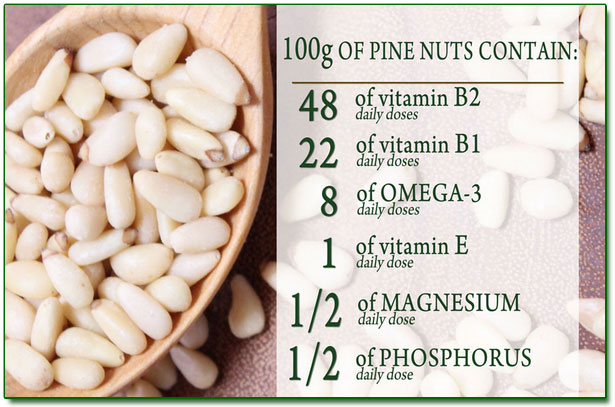
70% of these are essential and relatively essential, which indicates the high biological value of proteins. While arginine (up to 21g/100 g of protein) is considered replaceable in the diet of an adult person, it is considered essential in the case of children.
Cedar nut protein is distinguished from the protein of other products by its elevated content of diamino-hexanoic acid (up to 12.4g/100g of protein), methionine (up to 5.6g/100g of protein) and triptophane (up to 3.4g/100g of protein) - these are the most frequently deficient amino acids, which usually limit the biological value of protein in product composition.
The vitamins contained in cedar nuts contribute to the growth of the human organism. The composition of the nuts, therefore, includes the following vitamins:
- Vitamin A - the vitamin for growth and development;
- Vitamin B1 (thiamine) - which regulates the oxidation of carbohydrate metabolism products, and participates in the metabolism of amino acids, the formation of fatty acids and influences cardiovascular, digestive, glandular functions as well as the function of the central and peripheral nervous system;
- Vitamin B2 (riboflavin) - which helps the organism in the conversion of proteins, fats and carbohydrates into energy and is essential to the formation and sustenance of the fabric of the organism; it increases sensitivity of vision to light and colour, has a positive influence on the condition of the nervous system, skin and mucous membranes, the functioning of the liver and blood formation;
- Vitamin B3 (niacin) - which is important for fat synthesis, protein metabolism and food-energy conversion; it acts to regulate the higher nervous activity, the cardiovascular system, the functioning of the digestive organs, cholestorol metabolism and blood formation;
- Vitamin E (tocopherol), which influences the functions of the sex and other vascular glands, stimulates the action of the muscles, participates in the metabolism of proteins and carbohydrates, facilitates the digestion of fats, Vitamins A and O, and also protects cell membranes from injury.
Cedar nuts are rich in the most important macro- and micronutrients:
- copper - which is involved in the functioning of the brain and is essential for the formation of red corpuscles;
- magnesium - which is required for the formation of correct bone structure, and is also an important component of soft tissue;
- manganese - which is essential for the tendrons and hormones and helps the organism take in glucose; it also participates in the activity of the enzymes in the reproductive process, as well as growth and fat metabolism;
- silicon - which facilitates the formation and elasticity of the organism's connective tissue, and also participates in the calcification of the bones;
- vanadium - which retards the formation of cholestorol in the blood vessels; it also participates in the activity of the enzymes, in the metabolism of glucose and fat, and in the development of bones and teeth;
- potassium - which regulates the organism's water balance; it also assists in the normalisation of cardiac contractions and supplying nutrition to the muscle system;
- phosphorous - which is involved in the formation and maintenance of teeth and bones and plays an important role in the activity of the muscles and nerve cells and in quick energy release;
- calcium - which is the main component of bones and teeth and is essential for blood coagulation, cell integrity and heart action; it is also important for normal muscle contraction and the functioning of the nervous system;
- molybdenum - which assists in the metabolism of carbohydrates and fats, and facilities prevention of blood deficiency;
- nickel - a deficiency of which influences blood formation and retrads growth, along with changes in the content of iron, copper and zinc in the liver;
- iodine - which is part of the hormones of the thyroid gland and is essential for full metabolism processes;
- tin - a deficiency of which in the organism may lead to retardation of growth;
- boron - a deficiency of which can weaken mental alertness and the capacity to bear physical burdens;
- zinc - which plays a vital role in the restoration of tissue, normal skeletal growth and muscle contraction, and also helps in healing wounds and contributes to the normal functioning of the prostate gland;
- iron - which is the most important component in hemoglobin and protein.
Apart from the micronutrients listed above, cedar nuts also contain barium, titanium, silver, aluminium, iodide, cobalt and sodium.
The composition of cedar nuts includes carbohydrates such as:
- glucose
- fructose
- sucrose
- sugar
- starch
- starch gum
- pentosans
- cellulose
The shell of the cedar nut accounts for 55-60% of the weight of the seeds. Its composition includes tannic substances, amino acids, sugar and micronutrients.
In terms of chemical composition the cedar nut shell contains:
- fats 1.2-1.9%
- resin 3.5-4.0%
- proteins 1.6-1.9%
- cellulose 68-69%
- pentozans 21.5-22.7%
- calces 0.6-0.9%
- macro and micronutrients 0.15-0.19%
Water-dissoluble substances at 20C in the shell constitute 4.6-4.8%.
CEDAR NUTS IN FOLK MEDICINE
Russian folk medicine has eagerly made widespread use of cedar nuts in the treatment of various ailments. For example, the population of Siberia has long considered cedar nuts an effective remedy in salt deposition.
They used the nuclei of cedar nuts in preparing alcoholates and would take daily drops of the mixture over the period of a month. The result was usually very good.
It is known that cedar nuts were used in olden times in Yenisei Province for the treatment of abscesses. After chewing, cedar nuts were placed on the abscess, and a bandage applied on top of the sore spot. The nuts served to soften the abscess and sped up the maturation process. After the wound was cleansed from pus, the nuts accelerated the healing.
Earlier the husk and powder of the cedar nuts were used to prepare cleansing baths; particles of bran were also added. The bath had a most beneficial effect on the skin, especially chapped or coarsened skin. These baths were recommended in the case of diathesis, eczema, pyodermatosis and other skin diseases. In addition, a bath with the addition of a concoction made of cedar nut husks and powder has a calming action on the nervous system. It is effective in cases of overexcitement as well as overexhaustion.
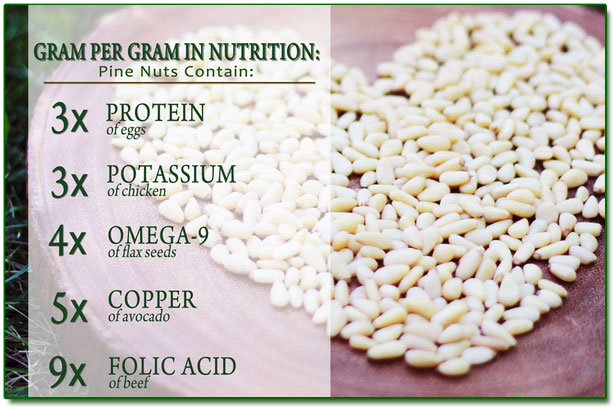
A potion made with whole cedar nuts was used for treatment of rheumatoid arthritis and gout, as well as in metabolism disorders and vitamin deficiency. They would pour vodka on ground nuts together with their shells. After letting it steep for 7 days, they would filter it and ingest over a period of 1.5-2 months.
The shell of the cedar nut is rich in tannic substances. It was used to make potions and concoctions (2-3 tablespoons per glassful), which were used in treating inflammation of the mucous membranes in the oral cavity and other organs in the form of embrocations and ablutions - in the case of skin diseases (lichen, pyodermatosis, eczema etc.), as well as burn damage.
Potions made from shells of cedar nuts were used for the treatment of the gastro-intestinal tract. It raises the tonicity, imparts strength and resotres the normal functioning of the gastro-intestinal tract.
Potions made from shells in vodka were also used to treat hearing disorders.
A concoction of cedar nut shells could be drunk in the case of gastro-intestinal disorders. It had a cohesive, anaesthetic and anti-inflammatory action. Siberian wizards recommended using a potion made from cedar nut shells in the case of hemorrhoids. Folk medicine recommended that a potion of cedar nut shells be drunk in the case of osteochondrosis or arthritis.
A potion of cedar nut nuclei in light wine was taken as a blood-cleansing remedy. It was good to add honey to this potion too.
Folk medicine recommended a potion of cedar nut nuclei in wine with low alcoholic content be taken for bladder problems, as well as for stones in the liver and gall bladder.
The ground nuclei of cedar nuts with honey was useful in treating ulcers. Folk medicine held that with a variety of skin diseases, including skin cancer, eczema and boils, the constant use of natural cedar nuts or cedar oil would lead to recovery.
Cedar nuts should be a constant part of the diet of children and teenagers. They have a beneficial effect on children's physical and mental development. They are very useful and essential during the exfoliation period.
The use of cedar nuts serves to strengthen the organism's defence mechanisms.
Presented by "Open Mind" organisation, Ukraine, June 25, 2005.
http://www.ringingcedarsofrussia.org/
Used by permission
Copyright CedarInfo.info
* * *
Customer Reviews:
Russian Cedar Nuts are Awesome, thx Anastasia :):):)
Serge, USA
* * *
I have never, in my 34 years, ate a cedar nut raw, or alone. And I am sad. Because that's 34 years wasted. They are SO GOOD! I am now addicted!
Julie Healon, USA
* * *
These cedar nuts were the star of the show in my cranberry, cedar nut stuffing this Christmas.
D. Dizmang, USA
Buy a combo "Buy 3 get 1 FREE" for the unshelled cedar nuts $120.00:


MEDITERRANEAN ORZO WITH ARTICHOKE AND CEDAR NUTS
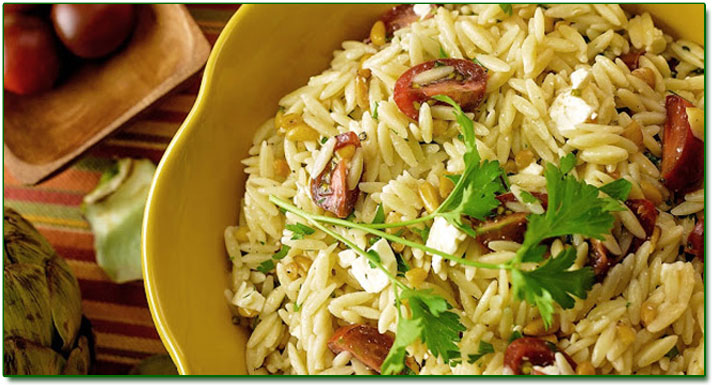
Ingredients:
FOR THE SALAD:
- 1 1/2 cups Orzo
- 3 tbsp Cedar Nuts
- 14 oz. Artichoke Hearts
- 2 cups Baby Spinach
- 1 tsp Garlic, finely minced
- 1 cup Feta Cheese
FOR THE DRESSING:
- 1/4 cup Cedar Nut Oil
- 3 tbsp Red Wine Vinegar
- 2 tbsp Lemon Juice
- 3/4 tsp Salt
- 1/2 tsp Black Pepper
- 2 tsp Fresh Oregano, finely chopped
- 1 tbsp Fresh Parsley, finely chopped
Preparation:
1. Place a pot with about 3 cups of water on a burner, add a pinch of salt and bring to a boil.
2. Cook the Orzo until al dente.
3. Drain in a mesh strainer, do not rinse.
4. While orzo cooks, lightly toast cedar nuts in a dry small skillet over moderate heat until they start to brown, about 2 minutes.
5. Remove from heat and cool 1 minute, then coarsely chop.
6. Add a touch of cedar nut oil, chopped garlic and the baby spinach to the pan.
7. Cook the garlic and spinach over medium heat until it begins to wilt and is cooked through. 2-3 minutes. Remove from heat and set aside.
8. Drain artichoke hearts in a mesh strainer and rinse well.
9. Pull off leaves from bases of hearts and quarter bases.
10. Rinse leaves and bases well, then drain thoroughly.
11. Add orzo, cedar nuts, artichokes, baby spinach and feta to a large mixing bowl.
FOR THE DRESSING
1. Stir together cedar nut oil, vinegar, lemon juice, salt and pepper in a large bowl.
2. Add dressing to the salad.
3. Add the fresh chopped herbs
4. Stir to combine.
5. Garnish and Serve
TOASTED CEDAR NUT AND GARLIC HUMMUS
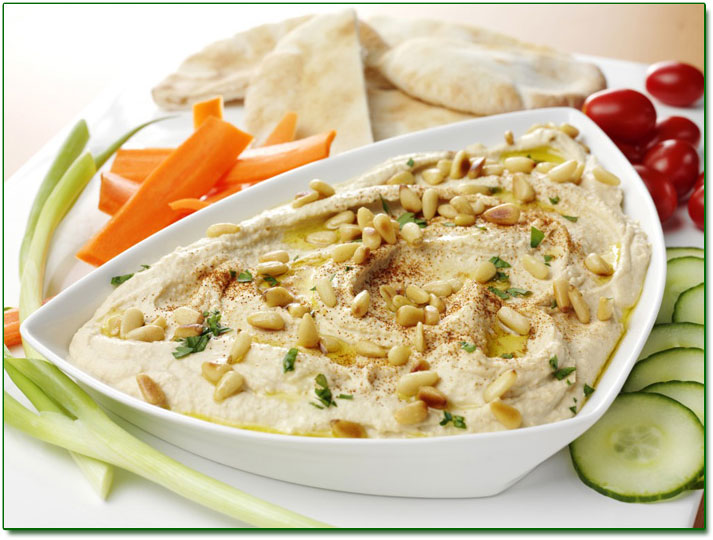
Ingredients:
- 1/4 cup Cedar Nuts, toasted
- 1/3 cup tahini
- 1 tablespoon cedar nut oil
- 1 teaspoon salt
- 1 teaspoon fresh parsley, chopped
- Hot sauce (optional)
- Toasted pita bread
- 2 cups canned garbanzo beans, rinsed and drained
- 1/4 cup lemon juice
- 2 cloves garlic, halved
- 1 pinch paprika
- 1/2 cup water (optional)
- Sliced vegetables (cucumbers, red peppers, grape tomatoes, carrots, etc.)
Preparation:
Place cedar nuts in a dry skillet over medium-low heat, tossing frequently until lightly toasted (about 2-3 minutes). Set aside.
Place the garbanzo beans, tahini, lemon juice, salt, garlic and hot sauce (if desired) in a food processor. Blend until smooth adding water as needed until desired consistency is reached. Transfer mixture into a serving bowl.
Drizzle cedar nut oil over the mixture. Sprinkle with toasted cedar nuts, paprika and parsley. Serve with fresh vegetables (cucumber rounds, red peppers, grape tomatoes, carrots) and/or toasted pita bread.
SPRING GREEN PESTO PASTA WITH CEDAR NUTS AND PARMESAN
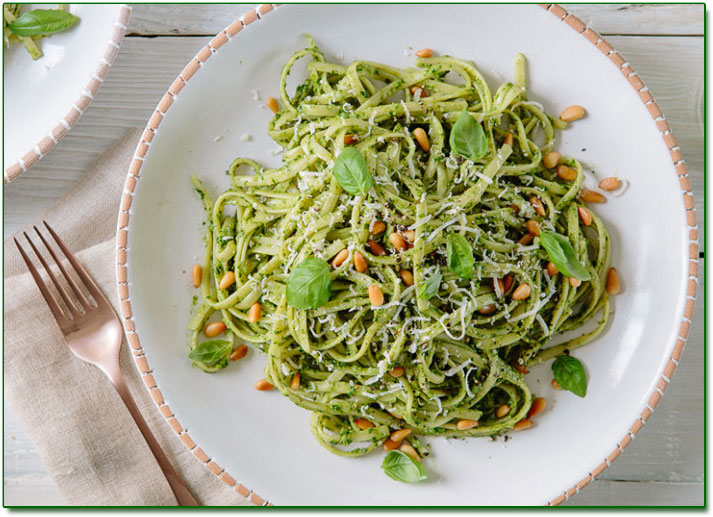
Ingredients:
- 5 ounces fresh baby spinach leaves
- 1/4 pound fresh asparagus tops only, blanched (2 oz cooked)
- 1/2 cup packed fresh Italian parsley leaves
- 1/2 cup packed fresh basil leaves
- 1/4 cup packed fresh cilantro leaves
- 2 garlic cloves, minced
- 1/4 cup toasted cedar nuts
- 4 ounces freshly grated Regiano Parmesan cheese
- 1 teaspoon Salt
- Freshly ground black pepper
- 1/3 cup cedar nut oil
- 1/4 cup prepared medium chipotle salsa
- 1 pound linguini pasta
- Fresh basil
- Toasted cedar nuts
- Freshly grated Parmesan cheese
Preparation:
In bowl of food processor, combine spinach, asparagus, fresh herbs, garlic, cedar nuts, cheese, salt and pepper. Process with on/off motion until mixture is smooth. With processor running, slowly add oil to fully incorporate with vegetable mixture. Pesto mixture should be smooth with flecks of green.
Stir in chipotle salsa.
Cook pasta according to package directions; reserve 1 cup cooking liquid and drain. Toss with reserved vegetable/herb pesto. Add pasta water as needed to thin sauce.
Garnish with fresh basil and toasted cedar nuts. Serve immediately with additional Parmesan cheese, if desired.
http://www.yummly.com/; http://www.foodbeast.com/; http://www.mortonsalt.com/
CEDAR NUTS CAN BE SUBSTITUTED WITH CEDAR NUT FLAKES.
For more recipes please click here

For Educational purposes only
This information has not been evaluated by the Food and Drug Administration.
This information is not intended to diagnose, treat, cure, or prevent any disease.
These articles come directly from researchers and are passed on to everybody. The company assumes no liability for any content in these articles.
For more great articles go to http://www.ringingcedarsofrussia.org/cedar_nuts_and_ringing_cedars_information.php